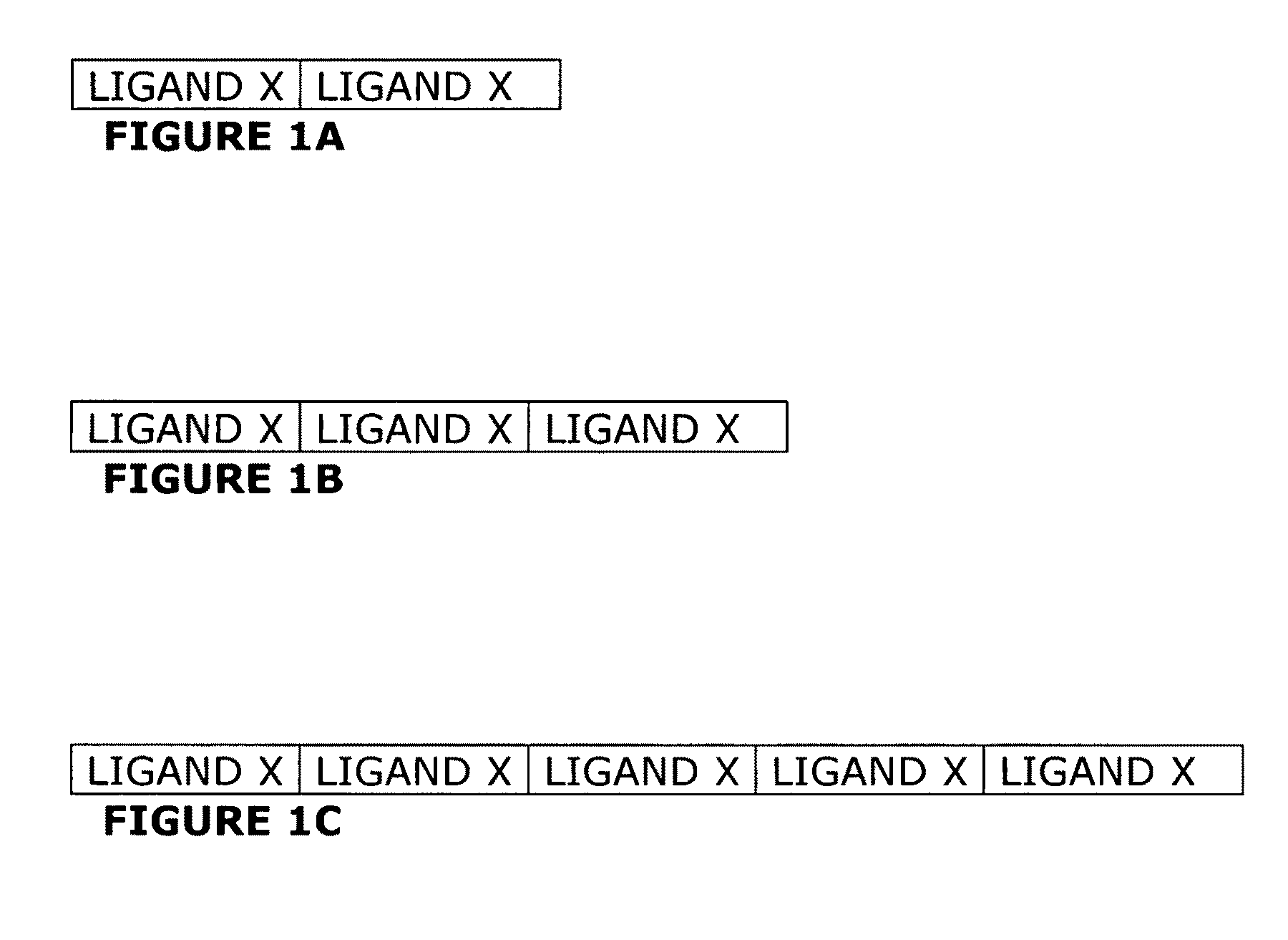ERK ligands and polynucleotides encoding ERK ligands
a technology of erk ligands and polynucleotides, which is applied in the field of mammalian kinase ligands, substrates and modulators, can solve the problems of limiting the number and nature of small molecule drug targets, and achieve the effect of preventing erk from phosphorylating a substra
- Summary
- Abstract
- Description
- Claims
- Application Information
AI Technical Summary
Benefits of technology
Problems solved by technology
Method used
Image
Examples
example 1
[0085]A polypeptide comprising a heteropolyligand, an endoplasmic reticulum cellular localization signal, and a His6 epitope is synthesized. Examples of such polypeptides are generically represented by FIGS. 8A, 8B, 8D, 8E and 8F. The polypeptide is synthesized on an automated peptide synthesizer or is recombinantly expressed and purified. Purified polypeptide is solubilized in media and added to cells. The polypeptide is endocytosed by the cells, and transported to the endoplasmic reticulum. Verification is performed by immunohistochemical staining using an anti-His6 antibody.
example 2
[0086]A transgene is constructed using a human cytomegalovirus (CMV) promoter to direct expression of a fusion protein comprising SEQ ID NO:96, SEQ ID NO:99, SEQ ID NO:89, wherein Xaa is alanine (POLYLIGAND), green fluorescent protein (REPORTER), and a plasma membrane localization signal (LOCALIZATION SIGNAL). Such a transgene is generically represented by FIG. 9C. The transgene is transfected into cells for transient expression. Verification of expression and location is performed by visualization of green fluorescent protein (GFP) by confocal microscopy.
example 3
[0087]A transgene construct is built to produce a protein product with expression driven by a tissue-specific promoter. The transgene comprises a synthetic gene expression unit engineered to encode three domains. Each of these three domains is synthesized as a pair of complimentary polynucleotides that are annealed in solution, ligated and inserted into a vector. Starting at the amino-terminus, the three domains in the expression unit are nucleotide sequences that encode an ERK ligand, a FLAG™ epitope, and a nuclear localization signal. The ERK ligand is a monomeric ligand, homopolymeric ligand or heteropolymeric ligand as described herein. Nucleotide sequences encoding a FLAG™ epitope are placed downstream of nucleotide sequences encoding the ERK ligand. Finally, nucleotide sequences encoding the localization signal are placed downstream of those encoding the FLAG™ epitope. The assembled gene expression unit is subsequently subcloned into an expression vector, such as that shown in...
PUM
| Property | Measurement | Unit |
|---|---|---|
| Fraction | aaaaa | aaaaa |
Abstract
Description
Claims
Application Information
 Login to View More
Login to View More - R&D
- Intellectual Property
- Life Sciences
- Materials
- Tech Scout
- Unparalleled Data Quality
- Higher Quality Content
- 60% Fewer Hallucinations
Browse by: Latest US Patents, China's latest patents, Technical Efficacy Thesaurus, Application Domain, Technology Topic, Popular Technical Reports.
© 2025 PatSnap. All rights reserved.Legal|Privacy policy|Modern Slavery Act Transparency Statement|Sitemap|About US| Contact US: help@patsnap.com



